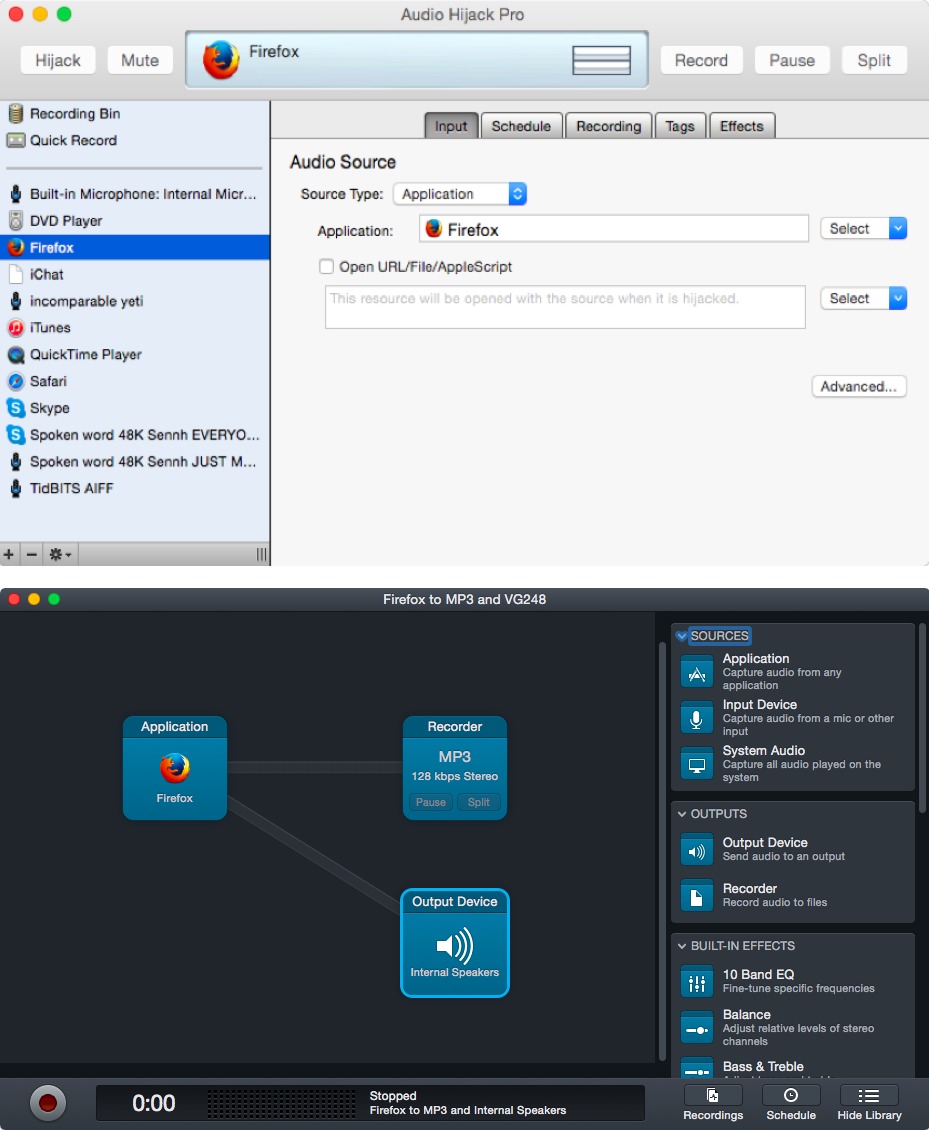
- AUDIO HIJACK EXTERNAL MICROPHONE HOW TO
- AUDIO HIJACK EXTERNAL MICROPHONE FREE
- AUDIO HIJACK EXTERNAL MICROPHONE MAC
Waveforms of the same audio as recorded on the four different sources You go from recording to having the files ready immediately. Whether that's you or someone else, the editor may well have to do some work cleaning up the audio but otherwise this is a simple, fast workflow. You can finish the recording and be sending the audio off to your editor immediately. This means you end up with multiple tracks and they all sound good.
AUDIO HIJACK EXTERNAL MICROPHONE MAC
Then, too, if you're recording a podcast with someone else, you can use a Mac app such as Rogue Amoeba's Audio Hijack to simultaneously record both your microphone and the Skype, FaceTime Audio, Slack or Discord conversation. The audio quality is excellent if you record in ideal conditions, such as in a soundproof room or with little extraneous noise. With all of these devices switched on and recording simultaneously, we did a podcast.įor utter convenience and speed, the Mac's QuickTime Player and a Blue Yeti microphone win out over everything. Strictly speaking, the Roland R-07 is also aimed at musicians and comes with extra ports for connecting instruments or microphones to it, but to explore this for podcasting, we stuck to voice recording.
AUDIO HIJACK EXTERNAL MICROPHONE FREE
We used macOS's free QuickTime Player and we recorded using a Blue Yeti microphone. Instead of an iPhone with different mics and audio apps, we recorded on a Mac. Then we also tried that BBC Radio producers' choice, the Zoom iQ6 which plugs its stereo microphones into the Lightning port of your iPhone and costs $99.Īnd lastly, to give a baseline comparison, we went completely the other way. That's still available used for around $120 but if we were buying it today, we'd get the updated ICD-UX560 which is $80. We compared that with what's been a stalwart recorder for us, the old Sony ICD-UX533. This is a handheld recorder with stereo microphones and the retail price is $230 but a typical street price is $196. However, it was also prompted by the release of the Roland R-07 audio recorder which is being specifically marketed for podcasters. The prompt for this piece was in part because of a recommendation by BBC Radio 4 producers in the UK. There are BBC Radio professionals who swear by broadcast-quality microphones that you plug into your iPhone's Lightning port. Once you've used more than your built-in iPhone mic, though, you'll not want to go back.

Okay, it's too strong a word to say that you need this.

You need either a great microphone that you can plug into your iPhone, or you need a great microphone that comes built in to a separate audio recorder.Īs good as the Zoom iQ6 is, its Lightning connector means it is only going to record audio to the side of what you're filming
AUDIO HIJACK EXTERNAL MICROPHONE HOW TO
Maybe it'll take you time to learn how to get the most out of it, and maybe the equipment isn't exactly cheap, but it's something you'll buy once and use forever. There may well be times when that's your best option, but for most podcasts, you will be better off spending money on equipment instead.

One solution is to hire a crew to record the podcast audio and video for you while you concentrate on the script and the presentation, but that's expensive.

And the video may be brilliant but while you're filming with that, the iPhone's microphone is completely pointing away from you. Except that this good microphone is little use when there are two of you speaking. The sound quality is good, the video is excellent, you're ready to make a podcast. If you're recording an audio or video podcast, you do already have all the equipment you need right there in your iPhone. L-R: Roland R-07, Zoom iQ6, Sony ICD-UX533


 0 kommentar(er)
0 kommentar(er)
